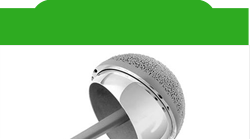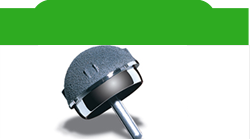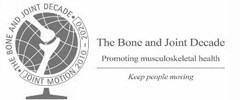Healthcare News
10 Strengthening Exercises for Hip Bursitis
Source: GoodRx Health
Previously, researchers thought that hip bursitis was the primary cause of lateral or side hip pain. Now, experts know that greater trochanteric pain syndrome (GTPS) is a more accurate explanation. GTPS includes injury or wear and tear of the gluteal muscle tendons (tendinopathy), which may cause hip pain that worsens with movement.
A hip-assist robot to advance fitness in the elderly
Source: Medical Xpress
The natural aging process often results in a notable reduction of muscle mass, particularly in the lower limbs. This decline, in turn, leads to a gradual decrease in physical activity among older adults, as the weakening of lower-limb muscles heightens the risk of falls. Fortunately, a strategic blend of aerobic and balancing exercises has the potential to not only enhance physical function but also mitigate the risk of falls in the elderly.
What are the best stretches for tight hamstrings?
Source: Medical News Today
Various exercises may reduce tight hamstrings and lower the risk of injury. People can do hamstring stretches sitting on a chair, lying down, against a wall, and more
8 Exercises to Stretch and Strengthen Your Psoas Muscle
Source: GoodRx Health
Your psoas muscle is one of your hip flexors that lifts your thigh. When this muscle is too tight or weak, it can result in muscle imbalances that cause pain or hinder your ability to walk. Learn more about the role of the psoas muscle and exercises to stretch and strengthen it.
Stiff Low-Back and Aching Hip Pain: What's Causing It?
Source: Verywell Health
Low-back pain is one of the most common reasons for healthcare provider visits and time missed from work. It often occurs with hip pain, but back pain can sometimes be mistaken for hip pain. This is because the hip joint is located near the lumbar spine (low back). A hip injury might also mimic back pain.
Normal Hip Range of Motion
Source: Verywell health
Range of motion (ROM) is a measurement of the distance and direction a joint can move to its full potential. Hip ROM is dictated by the ball-and-socket hip joint, which is made up of the femur (thighbone) and pelvis. They fit together in a way that allows for fluid, repeated motion—and a fair amount of wear and tear—but the joint isn’t indestructible.
How to Do Hip Abduction Exercises
Source: Verywell Health
Hip abduction is the action that moves your thighs straight out to the side, like during the first half of a jumping jack. This movement is primarily performed by the gluteus medius muscle—one of three muscles commonly called the glutes. Hip abduction exercises strengthen abduction movements and improve pelvic stability, particularly when you're standing on one leg.
4 Hip-Strengthening Exercises
Source: Verywell Health
Hip-strengthening exercises can be incredibly beneficial if you are dealing with hip pain or weakness due to an injury, surgery, or chronic condition like hip arthritis. They are also useful for conditioning the hip muscles if you are a runner, weight lifter, older adult, or you wan to improve your balance, stability, or mobility.
Hip Flexor Muscles and Injuries
Source: Verywell Health
The hip flexor muscles are a group of muscles situated near the top of your thighs that allow you to lift your knee toward your chest and bend forward at the hip. This includes the iliacus, pectineus, psoas major, rectus femoris, and sartorius muscles that work together to enable hip flexion.
Is Walking Good for Hip Arthritis?
Source: Verywell Health
Hip arthritis results from the breakdown of cartilage within your hip joints, causing hip stiffness and pain that can increase with inactivity, standing, and walking. Although walking can be uncomfortable and difficult with hip arthritis, walking is also incredibly important for maintaining the mobility and strength of your hips.
Easy Stretches for Hip Pain
Source: Verywell Health
Hamstring stretches, hip flexor stretches, straight leg raises, and bridges are just some of the exercises and stretches for hip pain. By keeping your hip joint limber and strong, you can improve your mobility, help with hip range of motion, and alleviate pain.
Progression of femoroacetabular impingement in contralateral hip
Source: Orthopedics This Week
New research has uncovered which factors are important when tracking the progression of disease in the contralateral hip of patients with symptomatic femoroacetabular impingement. FAI is one of the most common causes of hip osteoarthritis, but the factors controlling the progression of it are still not completely understood.
Hip flexors get weak when we sit too much—but simple stretches and strengthening exercises can leave you less stiff
Source: Medical Xpress
I am sure you've been told you should stand up and move away from your work stations or use a standing desk where possible. One of the major benefits of doing this is to activate and stretch the hip flexor area.
Rapid destructive hip osteoarthritis: causes, treatment, and outlook
Source: Healthline
Wear and tear from daily movement can impact your joints with age. Many people over age 50 will experience osteoarthritis, resulting from the damage such long-term wear and tear does to the cartilage (protective tissue) between the bones of your joint.
What to expect from physical therapy for hip bursitis
Source: Verywell Health
If you have pain in your hip or hips, you may be suffering from a condition called hip bursitis. Hip bursitis occurs when the small fluid-filled sac, called a bursa, becomes inflamed and irritated on the outside or inner part of your hip. Hip bursitis causes pain, decreased strength, and difficulty with movements like walking or running.
What to know about hip dysplasia in children and adults
Source: Medical News Today
Hip dysplasia occurs when the two bones that come together in the hip joint — the pelvis and femur bones — are out of alignment. The condition can cause misalignment, movement, and flexibility issues for children and adults.
Exercises for Hip Pain
Source: Verywell Health
Sometimes the best way to relieve hip pain is to start moving more. Although rest and recovery can be necessary to heal an injury, sitting for too long puts added stress on the hips. The right types of exercises build strength, alleviate pain, improve your range of motion, and help protect your hips in the long haul.
In Many Cases, Hip Replacement Also Eases Back Pain
Source: HealthDay
If you have a bad hip and lower back pain, a new study suggests that hip replacement surgery may solve both issues at once.
What's new in hip replacement surgery?
Source: Reading Eagle
There are two main surgical approaches to hip replacement surgery. The first has been in use longer and is often referred to the traditional approach, or posterior hip replacement surgery. The second type is called anterior hip replacement surgery. It is a newer and more technically complicated surgery but has some advantages over the traditional approach.
A Runner's Guide To Hip Pain: Symptoms, Causes & Treatment
Source: mindbodygreen
You may have experienced general tightness or discomfort in your hips after sitting in the same place for too long. But hip pain from running is different and may require more specific measures for treatment and recovery. Whether you're a new runner or a seasoned one, hip pain is common. Here's what you should know about recognizing and managing it, according to experts.
What Are the Treatment Options for Hip Arthritis?
Source: healthline
All treatments for hip osteoarthritis aim to manage pain and improve mobility, but the right option will depend on the individual. Initial treatment may simply be exercise and stretching. However, osteoarthritis is a degenerative disease, which means symptoms often worsen over time. If this happens, your healthcare provider may recommend hip replacement surgery. Read on to learn about the available treatment options for hip arthritis.
Study: Eating Mediterranean-type diet could reduce bone loss in osteoporosis patients
Source: ScienceDaily
Eating a Mediterranean-type diet could reduce bone loss in people with osteoporosis -- according to new research. New findings show that sticking to a diet rich in fruit, vegetables, nuts, unrefined cereals, olive oil, and fish can reduce hip bone loss within just 12 months.
When hip and knee both need to be replaced, hip surgery usually done first
Source: Postbulletin
In a situation like yours, it's typically recommended that the joint causing the most symptoms be replaced first. If symptoms are similar, then it's usually best for the hip replacement to be done first. You'll need to allow about six weeks for recovery and rehabilitation after your hip replacement. Depending on your individual circumstances, you should be able to move forward with the knee replacement procedure any time after that.
Towards better hip replacements
Source: Healio
Patients with degenerative arthritis who underwent total hip or knee arthroplasty experienced better survival compared with the general population for about 8 years after surgery, according to results.
AAOS releases new clinical practice guideline for osteoarthritis of the hip
Source: AAOS
The American Academy of Orthopaedic Surgeons (AAOS) recently released a new clinical practice guideline (CPG) on the treatment of osteoarthritis of the hip that strongly recommends the use of pre-surgical treatments to ease pain and improve mobility, including corticosteroid injections, physical therapy and non-narcotic medications.
The Center for Hip Pain & Preservation
541 East 71st Street
New York, NY 10021
 Click here for Driving Directions
Click here for Driving Directions

















